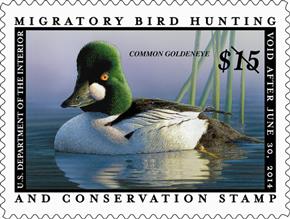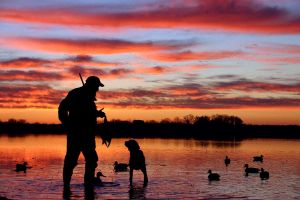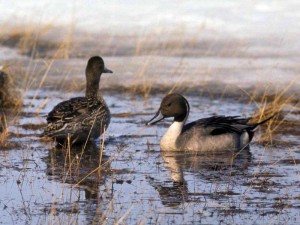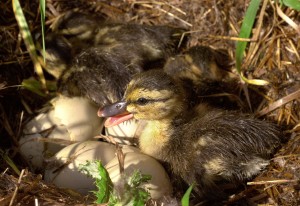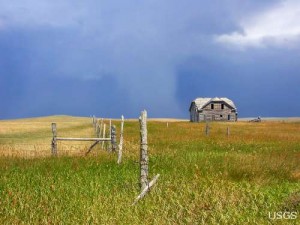WASHINGTON – Dec. 19, 2013 – A bill was introduced in the U.S. Senate today to increase the price of the federal duck stampto $25. The current price of $15 was set more than 20 years ago, in 1991.
Category: Conservation
News from state, federal and private wildlife conservation organizations.
Major Milestone for Families Afield—1 Million New Hunters!
NEWTOWN, Conn. — The future of hunting is brighter today than it was nearly a decade ago thanks to the extraordinary success of Families Afield, an innovative program that has introduced 1 million newcomers to hunting.
This impressive number demonstrates that interest in hunting remains high and that what’s needed to spark a lifelong passion for hunting is a proper introduction enabled by state regulations. With success in hand, Families Afield’s call to action is this: If your state offers an apprentice hunting license, make it a point to bring a newcomer along this hunting season; or if you’ve never gone hunting before, seek out a mentor and give it a try. Continue reading
Duck Hunter numbers on the rise in Minnesota
More small game hunters ventured into Minnesota’s fields and forests in 2012, according to the Minnesota Department of Natural Resources (DNR) annual small game survey.
The number of pheasant and duck hunters increased 8 percent and corresponded with a slight increase in pheasant and duck stamps sales. In 2012, an estimated 84,000 people hunted pheasants and 90,400 hunted ducks.
Although ruffed grouse are on the downward side of their 10-year population cycle, the number of grouse hunters increased 6 percent in 2012 to 97,200.
Statewide estimates show that hunters harvested 264,000 pheasants, 835,000 ducks and 355,000 ruffed grouse.
FWS Proposes Liberal Frameworks for Late Waterfowl Seasons
The U.S. Fish and Wildlife Service (Service) is proposing continued liberal hunting season lengths and bag limits for the upcoming 2013-14 late waterfowl seasons. The annual results of cooperative population surveys, banding programs and harvest surveys guide the Service’s waterfowl conservation programs under authority of the Migratory Bird Treaty Act. All of this information represents the largest data set on any wildlife species group in the world, and helps provide hunting opportunities while ensuring the long-term health of waterfowl populations. States select their individual seasons from within the federal frameworks that establish the earliest beginning and latest ending dates and the maximum season length and bag limits.
The Service’s 2013 Waterfowl Population Status Report summarizes information on the status of duck and goose populations and habitat conditions during spring of 2013. Overall, population estimates for most species of ducks remained strong for this breeding season. In the traditional survey area, which includes the north-central United States, south-central and northern Canada, and Alaska, the 2013 total duck population estimate was 45.6 million birds, a decrease of six percent from last year’s estimate of 48.6 million, but still 33 percent above the long-term average (1955-2012). Continue reading
House Appropriations bill zeros out conservation programs.
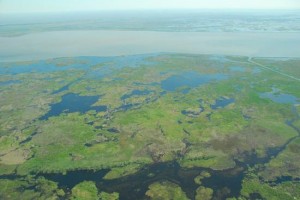
A NAWCA grant for Louisiana’s Liner’s Canal will benefit hundreds of acres of fresh and intermediate marsh.
No funding for NAWCA or LWCF.
WASHINGTON – July 23, 2013 – The House Appropriations Committee’s 2014 Interior and Environment Appropriations bill, released earlier today, doesn’t include funding for vital conservation programs, such as the North American Wetlands Conservation Act (NAWCA).
“In the current fiscal climate, we understand that conservation programs must also receive scrutiny in the budget cutting process,” DU CEO Dale Hall said. “However, it is short sighted and unacceptable to completely zero out funding for conservation programs that are also economic drivers. NAWCA in particular is unique because it more than triples any investment by the federal government with non-federal funding through private partners.” Continue reading
Breeding population second highest ever recorded.
BISMARCK, N.D. — North America’s spring duck population is down slightly from record levels, but pond counts are up 24 percent over last year, according to the 2013 Waterfowl Breeding Population and Habitat Survey released today.
The survey, which has been conducted annually since 1955 by the U.S. Fish and Wildlife Service and the Canadian Wildlife service, puts the breeding duck population at 45.6 million, the second-highest level ever recorded. Continue reading
Delta Waterfowl, Sitka Gear introduce one-of-a-kind streaming duck nest cam.
EGELAND, N.D. — She hunkers in the middle of a grassy field on the windswept prairie, her body heat warming a shallow bowl filled with fragile eggs. If she’s lucky enough to remain hidden from predators — skunks, foxes, raccoons, opossums and others with a taste for duck eggs — for 24 days and 24 nights, her brood of downy ducklings will hatch.
It’s the springtime cycle of life for a duck on the breeding grounds of the Prairie Pothole Region, an area that encompasses the Dakotas and southern Canada where 70 percent of North America’s ducks are born.
Through a unique project this year, Delta Waterfowl is giving you a live window into the nest of a wild duck with the Delta Duck Cam (www.deltawaterfowl.org/duckcam). Outdoor apparel maker Sitka Gear has provided sponsorship for the Delta Duck Cam project. Continue reading
USDA seeks sign-ups for wetlands, grasslands conservation programs.
WASHINGTON, May 28, 2013 – USDA’s Natural Resources Conservation Service is accepting applications from landowners interested in the Wetlands Reserve Program and Grassland Reserve Program.
A new round of funding authorizes $255 million to enroll up to 100,000 additional acres into WRP and $47 million to enroll up to 200,000 additional acres into GRP, both nationwide.
Anyone interested in these voluntary programs should contact their state or local NRCS office. Sign-up dates and deadlines vary by state, and applications are accepted throughout the year. Continue reading





